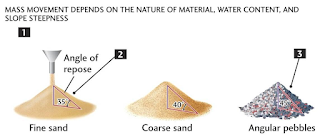Dissolution of solid in liquid
Dissolution is the process of a solid substance dissolving in a liquid to form a solution. In the pharmaceutical industry, dissolution plays a crucial role in drug delivery. It determines the rate at which a drug is released from a dosage form and becomes available for absorption by the body. Therefore, understanding the dissolution of solids in liquids is essential for developing effective drug products.
Dissolution Process
The dissolution process involves the breaking down of the solid substance into smaller particles that are then dispersed throughout the liquid solvent. The solute particles are surrounded by solvent molecules, and the intermolecular forces between the solute and solvent molecules overcome the intermolecular forces holding the solute particles together, allowing them to dissolve.
The process of dissolution can be broken down into several steps:
Wetting: The first step is wetting, where the solid surface comes into contact with the solvent. The solvent molecules then spread out and form a film over the solid surface.
Diffusion: The second step is diffusion, where the solvent molecules penetrate the solid surface and reach the solute particles. The diffusion rate is influenced by factors such as the concentration gradient, temperature, and the size of the solute particles.
Dissolution: The third step is dissolution, where the solute particles dissolve in the solvent and form a homogenous mixture.
Factors Affecting Dissolution
Several factors can affect the dissolution of solids in liquids:
Solubility: The solubility of a solid in a particular solvent is the most critical factor affecting dissolution. If a solute is not soluble in a solvent, it will not dissolve.
Surface area: The surface area of the solid particles affects the rate of dissolution. Smaller particles have a larger surface area-to-volume ratio, making them dissolve faster than larger particles.
Agitation: Agitation of the liquid increases the rate of dissolution by bringing fresh solvent in contact with the solute particles.
Temperature: The temperature of the solvent affects the rate of dissolution. Increasing the temperature generally increases the rate of dissolution.
pH: The pH of the solvent can affect the solubility of the solute. For example, some drugs are more soluble in acidic solutions than in neutral or basic solutions.
Applications in Pharmaceutical Industry
The dissolution of drugs is critical for their absorption and bioavailability. In the pharmaceutical industry, dissolution testing is used to determine the rate and extent of drug dissolution from a dosage form. This testing is required by regulatory agencies to ensure that a drug product will deliver the desired therapeutic effect.
Dissolution testing can be done using various methods, including the USP apparatus, which is a standardized apparatus for testing dissolution. The apparatus consists of a vessel containing the dissolution medium, a paddle or basket that rotates in the medium, and a sampling tube to collect samples at specific time intervals.
In conclusion, the dissolution of solids in liquids is a crucial process in drug delivery. Factors such as solubility, surface area, agitation, temperature, and pH affect the rate and extent of dissolution. Pharmaceutical companies use dissolution testing to ensure that their drug products deliver the desired therapeutic effect. Understanding the dissolution mechanism is essential for developing effective and safe drug products.



Good Insights about pharma manufacturing
ReplyDeletePharmaceutics-I (Theory and Practical)
ReplyDeleteIt gives us great delight and Pleasure to present to pharmacy students our book entitled “Pharmaceutics-I Theory and Practical “. Writing a book is inspiring, often exciting, and sometimes very challenging work.
Pharmaceutics plays a vital role in formulation development and evaluation of various dosage forms. This book will mainly guide students to get knowledge about origin and scope of pharmacy, various pharmacopoeias, prescription and drug incompatibilities, conventional dosage forms, pharmaceutical calculation and basics of Pharmaceutics. All the contents are discussed in detail and suitable examples are explained whenever required.
The intention of this book is mainly to emphasis the importance of formulation and the approach is essentially to focus on specific dosage forms such as tablets, capsules and liquids.
We hope you will find the book a useful source of information whether you are pre- graduate, post-graduate, or just interested in pharmaceutical formulation and the development of medicines.
Pharmaceutics-I (Theory and Practical)
This is very nice blog, please visit us for PCD Pharma Franchise ot Bulk medicians quantitybest pharma manufacturing company in India
ReplyDeleteGreat Post! Please Also Contract Manufacturing For Pharma ProductsPharma Franchise & Manufacturing Services
ReplyDeleteIn Pakke-Kessang & Namsai, Arunachal Pradesh
Great post! Mahrishi College of Pharmacy stands out as a Top 5 Pharmacy Institute thanks to its modern labs and quality teaching.
ReplyDelete